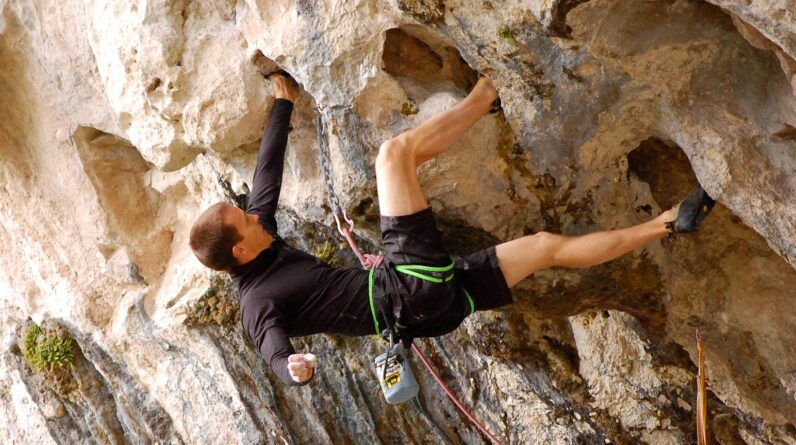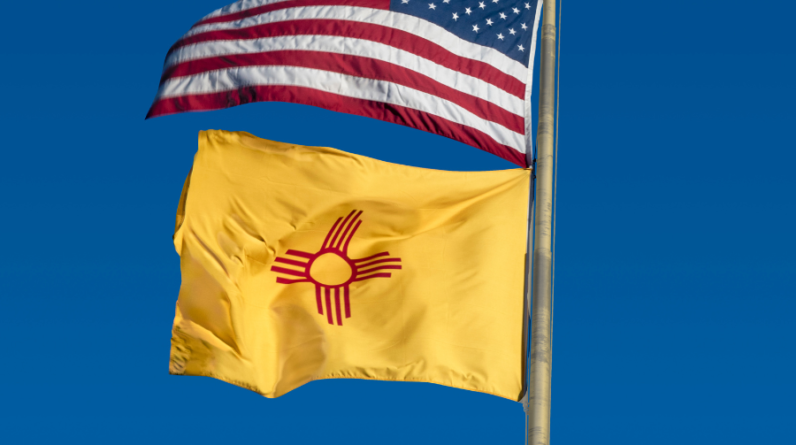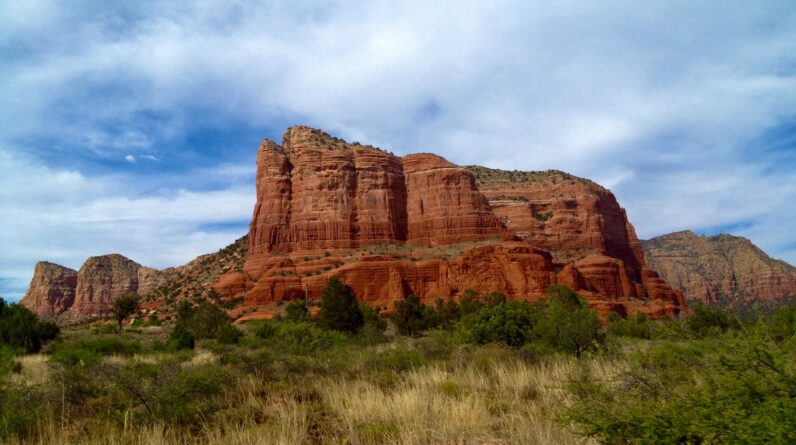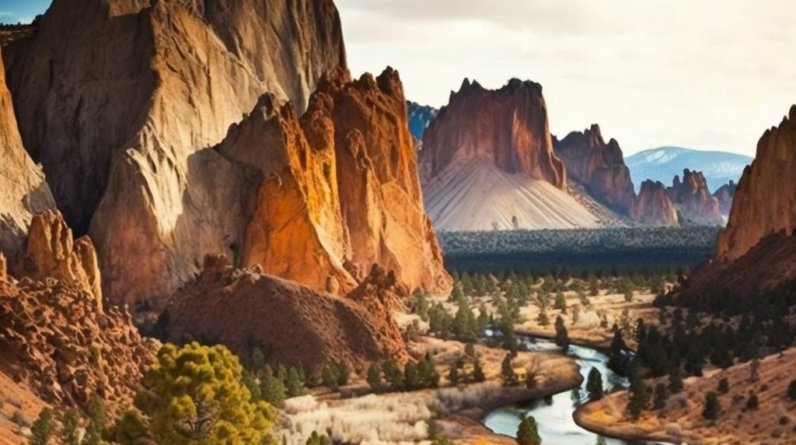
The Hardest Climbing Routes in the World

No matter if you are just beginning or an experienced climber, the most difficult routes around the globe can be a good way to challenge your endurance and strength. This article will discuss some of the hardest climbing routes in the world, as well as some of its most popular. We’ll also discuss the pros and cons of each route.
Adam Ondra’s Silence
Until now, there has been no sport route that compares to Adam Ondra’s Silence. The world’s most elite climber has established a new benchmark for 5.15d, and has opened the door to many more 5.15d routes.
While Silence is only the second 5.15d route ever climbed, it is still the hardest in the world. The route features an inverted 8C boulder problem and two boulder problems, 8B+ & V13. There are also some 8b “okays” in the first part of the route.
The first crux is an inhuman drop knee foot jam. The second crux is an 8b+ boulder problem, and the third is a 7b+ / V9 boulder problem. It’s not hard to see why Ondra named the route ‘Silence’.
It is found in Flatanger (Norway), in Hanshallaren Cave. The route is about 45 metres long.
Its silent finish is why it was given its name. This makes the route one of the most popular sport routes in history. The first part is a 20 metre section of 8b roof climbing. There’s also a 7B+ / V9 boulder problem and another inhuman drop knee foot jam. It’s easy to see why Ondra called it the’silence’ of all sports.
It’s no wonder that the grade of 5.15d has been a hit with climbers. Adam Ondra has many accomplishments, but Silence is his most significant. He’s climbed grades that most of us will never be able to reach. It’s also no wonder that he’s one of the world’s best sport climbers.
Although Adam Ondra’s Silence is not the most popular sport route in the world, it’s certainly one of the most difficult. Adam has also climbed many other incredible routes, including Action Directe and Martin Krpan in Slovenia, and Perla vychodu in 2007.
David Lama’s La Capella
A successful free ascent is not possible by wearing a ring in your right hand. Acclimatization is the key to a successful ascent. If you aren’t used to altitude, you may be susceptible to heart attacks and hypothermia. A good way to get accustomed to altitude is to eat healthy and take plenty of sleep.
Sport route ascents are the newest trend in climbing. These are bolted, or free climbs and are only a fraction the price of traditional climbs. La Rambla is a popular 5.14d route that has 32 pitches and lots of moves.
The La Rambla was not the first free climb to make the grade, but it was the first to make the grade with a dry tooling system. Dry tooling routes require supreme strength and strength of will and are usually classified as D16, which is a little confusing since dry tooling is usually done by professionals, while the average Joe has a little trouble with this style of climbing.
La Rambla’s most remarkable feature is its affordability. It took Lama four attempts to complete it, including the one he is famous for. It was surprising that there wasn’t a charge for the climb, given its high cost.
Unlike traditional climbing, the La Rambla is an endurance slugfest. Lama braved 80kph winds and temperatures of -30C to finish it. Lama also completed the Compressor Route’s first ascent free of charge in Patagonia. In fact, he did both of these feats in the same year.
La Rambla, while a relatively small feat, is still a significant accomplishment compared with the La Capella which was completed in seven years and had 32 very difficult pitches. The Crag’s advanced search tool allows you to find the hardest sport climbs in your area, and see what they have to offer.
The Return of the Sleepwalker (V17)
Currently the hardest climbing routes in the world are “El Capitan” in California, “Creature from the Black Lagoon” in Colorado, and “Return of the Sleepwalker” in Nevada. The grade of these bouldering routes is 5.14d to 6.15d.
El Capitan, a 32-pitch climb has a 5.14d top grade. Three climbers have tried to climb it and each of them has come away with success. The climb’s problems range from a 5.15b roof section before the finish to 5.14d on the roof section after the finish.
Rocky Mountain National Park is home to Creature From The Black Lagoon. It’s a popular place for hard climbers. A short film released by Mellow paints a picture of the mental agony of linking in a low start.
The artificial multipitch route “Sleepwalker”, located in Red Rocks (Nevada), is called Sleepwalker. Randy Leavitt bolted it in 2006, a climb of 76 meters. Ethan Pringle was also responsible for the climb. The route was initially graded 8C+ but was later downgraded twice.
Soudain Seul was first climbed by Simon Lorenzi in 2021. Nico Pelorson graded the route as 8C. In October 2020, he made another ascent.
The V16 Sleepwalker’s Return of the Sleepwalker can be described as a sitting start. It was first climbed by Daniel Woods in 2021. Woods spent 20 days on the boulder. Woods added six more moves to the problem. He also proposed a new V17. He said it would have a sit start and five V13 moves. It would be the 9A/V17’s first 9A/V17 in America and the first boulder-related problem to feature a sit start.
Burden of Dreams is a four-meter boulder problem that has never been repeated. Nalle Hukkataival first reached it in October 2016.
The new Daniel Woods route, Return of the Sleepwalker (V17), is one of the most difficult climbing routes. It starts at the top of “Wet Dream”, a boulder in Red Rocks. It is the most difficult boulder in America. The climb has 13 pitches of climbing up to 5.14d.
Woods is a pro climber living in Boulder, Colorado. The North Face sponsors him. On a rope, he has reached 5.15b. He is 31 years old. He has climbed several V16 problems. Creature from Black Lagoon and Box Therapy were some of his first ascents. He has flashed two of the hardest boulder problems in the world.
Jimmy Webb made the first ascent to Sleepwalker in December 2018. He climbed the route in only eight days. Woods climbed the same route again in January 2019. He added six moves, including a sit-start. He is the first American to climb a V17.
Helmcken waterfall
The Helmcken waterfall, also known as “Wolverine”, is one of the most challenging ice climbs in the world. The waterfall cascades over an enormous amphitheater of overhanging rock, making it ideal for hard mixed climbing. The falls are located in Wells Gray Provincial Park, British Columbia.
Helmcken Falls can be an incredible experience but is very dangerous. Ice in the Falls freezes everything it touches. Therefore, it is important to be careful when climbing. Also, be aware of ice missiles and ice screws falling off the ice.
The waterfall is also home to one of the world’s most dangerous ice climbs. The King Capella route, which was graded 9b+ by David Brasco, is an eight-meter climb to the left of the La Capella route.
La Capella is an 9.b+ route. It was bolted in 2006. David Brasco also bolted the King Capella route in 2006.
Seb Bouin completed the King Capella route one year ago. He then climbed La Capella. Seb Bouin also completed the Clark Mountain route.
Will Gadd was the first to discover Helmcken Falls’ steep ice climbing possibilities. Emmett, Will Gadd and other climbers created the spray for a 150-meter Wi10 ice climb. It was also the first graded WI13 ice climb.
The climbers used ice screws and bolted into the rock, making it a unique form of ice climbing. The ice screws can’t withstand a fall, however.
The Helmcken waterfall is also home to the world’s hardest mixed route. A collection of information about Helmcken Falls is the World Waterfall Database. This database includes data on the route’s grade, climbers who have completed the route and the date of their first ascent.
Latok I
Latok I, located in Pakistan’s Panmah Muztagh area is the highest point of the Latok Group. It is located at the center of the Latok group and has hosted some of the most difficult high-altitude climbing around the globe.
Many climbers attempted to scale the North Ridge at Latok I. Many of these teams did not reach the summit.
North Ridge is the most sacred ridge of alpinism. In 1979, a six-man Japanese team attempted the route, but turned back several pitches before reaching the top. It is now considered one of the hardest routes in the world. It has been attempted by 30 of the best climbers in the world, but none of them have succeeded.
The North Ridge is the only route of this height that has a clean face. However, the upper part of the face is extremely steep and produces avalanches with great frequency. The report from the summit team clarifies the safer line on the face in the last quarter of the climb.
KZ 95 and KZ 75 are the most prominent climbs. These were some of the most important routes. Both the former and latter were graded at 5.12d. This route is 8 meters long and runs on the left hand side of La Capella. There are two main cruxes to the route.
Silence is one of the hardest sport climbs on the planet and has been given a rating 9b+. There are two cruxes on the climb, one of which is an 8A+ boulder-problem crux. This is the most difficult sport climb to date.
The Project, Shawn Raboutou’s Alphane and Soudain Sel’s Burden Of Dreams are all climbs which may be harder than Silence.
Silence
Located in the Hanshelleren Cave of Flatanger, Norway, Silence is a 45-meter sport climb, rated as a 5.15d. This is one of the most difficult routes to climb in sport.
The first part of the route is a 20-meter 8b roof section. The second part features an 8B / V13 boulder problem and a 7B+ / V9 boulder problem. It is known for its unusual drop knee foot jam. It is the longest-running sport route in the world.
The route is a lot more complicated than its grade would suggest. While the 8C/V15 boulder problem, which is quite complex, is a significant crux of the route’s difficulty, it’s much easier to solve for the second and third cruxes. Although the route has not been officially rated by the ASA, the grade will be based on climbers’ assessments.
The route has been completed by only one person, Adam Ondra. The first ascent took 29 minutes. Ondra bolted the route for the first time in 2012. Ondra spent much time training for the climb. He also trained his calves to hold a kneebar for longer, avoiding clipping quickdraws. When he sent out the route, he wore kneepads. It took him eight days to complete the climb.
Adam Ondra is currently working on another project called Project Big. It is the route which could surpass even the most difficult sport route in the world. This is not an elaborate trick, but it’s certainly worth a grade.
Adam Ondra completed the route silently, thus the name of the route. It was initially called Project Hard. A more cryptic name was later selected. This is not the first climber to achieve this feat. However, it’s the first route completed on the most difficult climbing route in the world.
Mutation and Qui
France saw hard climbing flourish in the 1980s. The French people started to embrace hard climbing, and there was an explosion of strength and talent. The result was a huge increase in super-hard boulders that were established and freed. As a result, many of the world’s hardest climbing routes have been consolidated in the country.
France was the birthplace of hard climbing. Kurt Albert and Patrick Berhault were among the first to attempt hard routes. They both put up routes in the early 1980s. The first 8b+ in the United States was established by Scott Franklin in 1988.
A few years later, Adam Ondra made the first repeat of Qui in 1996. It took him ten years to complete it. Ondra completed it after many failed attempts on September 19, 2009.
Mutation and Qui are two of the hardest climbing routes in the world. They are both graded 5.14+ & 5.13+ respectively but they have been left off Open Air’s top 10 hardest routes due to grade averaging.
It is truly a tragedy. These climbs have been around for over twenty years. They are the world’s longest routes and are now in the process of being consolidated. This is a good indicator of what the future holds for climbing.
These climbs are also a testament to the insular nature of climbing. The limits are unlikely to be broken in one shot. These limits are most likely to break inch by inch over the course of time.
Other new hard routes include Underground (9a) in Italy and Smalto Direct (8c+) in Italy. These are also part of a group of hard climbs in France called the Buoux Trifecta.
La Dura Dura
We’ve heard a lot lately about Adam Ondra, and his new project La Dura Dura. A 5.15c route is not something that many young climbers get to climb for free. It was a great opportunity.
Adam Ondra is a bespectacled phenom from the Czech Republic. Ondra, just 18 years of age has made quite a reputation for free climbing the hardest routes around the globe. He’s got a bevy of World Cup victories, a silver Olympic gold medal and a slew of World Championship gold medals.
Although Ondra spent nearly nine weeks working on La Dura Dura, he didn’t get around to the first ascent until February 2013. In his documentary, La Dura Dura, he explains how he ended up on the route and what it took to get there.
Ondra got a lot out of this project. For La Dura Dura, he made five trips to Spain. Ondra worked on the project and also freeclimbed a 5.15c route called The Change.
It’s not often that a youngster gets to free climb a 5.15c and claim the first ascent of a 9b+ route. La Dura Dura, the most well-known 5.15c route in the climbing world, is not the only one. This is also the first time that 5.15c has been repeated.
La Dura Dura is also one of the most difficult climbing routes. It’s 40 metres long and consists of four boulder problems, plus one of the longest stretches of crimpy holds you’ll ever see.
La Dura Dura, one of the most difficult climbs in the world of climbing, is also one of the most significant routes to the sport. There are many notable achievements to its credit, including the fact that it is the first to repeat the 5.15c route, the first to use 9b+ routes, and the first to name and climb the 5.15c route by a female.
The Hardest Rock Climbing Spots in the World

Mount Fitz Roy
Monte Fitz Roy, located in Argentina’s Los Glaciares National Park is one of the most challenging mountaineering spots in the world. The mountain was first climbed in 1952 by French alpinists. Mount Fitz Roy is part of the Andes Mountains and is on the border between Argentina and Chile.
This mountain is very steep, so it is only climbed by experienced rock climbers. To prepare for an expedition to Mount Fitz Roy you will need to contact a guide. You should also be aware of the weather and have a first aid kit with you.
You have many options for climbing. There are normal routes, which are more suitable for beginners, and there are more challenging routes. The Franco-Argentine route and Californian route are two examples of typical routes.
Side-trip scrambles are available for the adventurous. You will also be able to see condors flying overhead. The weather in the area is unpredictable, so you should be prepared for whatever Mother Nature has in store.
You will find the best rocks to climb on the north side, where you may be able alpine-free climbing. The summit offers the most spectacular views, so take your time.
Another good route to climb is the west face. It is well-known for its unusual rock formations.
La Rage d’Adam
La Rage d’Adam, located in France’s Verdon Gorge is considered one of the most difficult sport routes. Seb Bouin completed the route in 2015 after bolting. It has a 9b/+ grade.
Seb Bouin is considered one of the best sport climbers in the world. He has climbed many hard routes in Verdon Gorge. He was rated as the world’s hardest climber before completing the La Rage d’Adam.
La Rage d’Adam, a steep climb that begins with 6 quick draws (8c) of climbing. Then comes a 10-move crux (with a huge overhang). Last 25m are 8b climbs. This requires a complete understanding of the knee Klemmer maneuvers.
Seb Bouin finally climbed La Rage d’Adam after four years of trying. He named the route after his friend Adam Ondra. Bouin repeated two 9b routes in Europe and freed Les yeux plus gros que l’antre at Russan.
La Rage d’Adam’s boulder problem is difficult. It requires a thorough understanding of the knee Klemmer maneuvers. Some holds have glued holds while others are chipped.
Seb Bouin also has climbed difficult routes in Flatanger (Norway). He climbed Adam Ondra’s Move F9b/+ in the spring. He then repeated the route in the fall. He also completed DNA, a route graded 9c.
Throughout his climbs, Seb Bouin has been exploring the history of sport climbing in France. He is also known for his documentary series on extreme sport climbing in France. Seb Bouin had an amazing summer. Seb Bouin has already climbed four routes of 5.15b. He plans to climb Hossana, a route graded F8b/+, next.
Siula Grande
Siula Grande, located in Peru’s Cordillera Huayhuash is home to a variety of mountain faces. The west face, which is the most notable, is a sheer vertical ascent. This is an iconic mountaineering feat and isn’t for the weak of heart.
The east face, however, is an easier route. In a six-day push from July 11-16, Bru Busom and Marc Toralles broke through first. The duo later backed off, citing rockfall.
However, the west face isn’t without risk. On the descent, one climber lost 100 feet. One fell 100 feet and lost his left leg. However, the first successful climb of a direct face occurred in 2004.
Touching the Void is a well-known mountaineering book. The book tells the tale of an individual climber on a solo quest for the Siula Grande summit. In 2003, the book became a movie. This is where the famous climb takes place.
Huascaran is Peru’s highest peak and it can be found in Cordillera Blanca. It’s the fourth-highest mountain in South America. It also has the most active volcanoes in the world. This is a very popular tourist spot. The summit can get crowded during peak climbing seasons.
Mount Kenya is a popular destination for mountaineering. It has an astonishing amount of glaciation. Over the years, Mount Kenya has been subject to many storms and ice fall. The peak is not always accessible, but climbing the top can be an enticing and exciting experience.
Dawn Wall
Located on Yosemite National Park’s El Capitan, Dawn Wall is one of the hardest rock climbing spots in the world. It’s also the longest route in the world, spanning 32 climbing pitches, including four 5.11 pitches.
Dawn Wall’s ascent of the mountain is an amazing story. Tommy Caldwell and Kevin Jorgeson were the first to climb it. The pair completed the route without assistance, and without coming down, in 19 days. The climb has been a sensation and was a major topic of discussion in media outlets.
Tommy Honnold and Kevin Jorgeson were involved in another El Capitan route, The Beautiful and Damned, before the Dawn Wall. They both had experience in bouldering and were looking to expand into other climbing disciplines. They became the first people to climb V11’s 55-foot Ambrosia and V13 The Beautiful and Damned.
In January 2015, Tommy Caldwell and Kevin Jorgeson completed their first free ascent of Dawn Wall, and the route is now one of the hardest big wall routes in the world. The preparation and planning took six years. It consists of 32 climbing pitches. There are four 5.11 pitches as well as one 5.10 pitch. The route is a single part of the Southeast face of El Capitan. It begins in a fairly easy section, but gets more difficult as you climb higher.
Near the top of this wall is the “Dawn Wall”, a rock line that receives the sunlight during the day. It connects to the Mescalito, and The Tempest roads.
Nalle Hukkataival’s small boulder problem on a 45deg granite wall
During a trip to Australia in 2009, Nalle Hukkataival came across a small boulder problem on a 45deg granite wall. The five moves required to climb the four-meter high boulder involved hand movements. He named it Burden of Dreams. This was considered to be one of the most difficult bouldering challenges in the world.
Hukkataival wasn’t ready to transmit it. He had been unable to complete individual moves. He also fell several times. He found that his only way to stick the move was with the left-hand dyno. It was climbed several times by him in his gym, and he improved the starting sequence. To send the climb, he had to have perfect skin conditions and a comfortable air temperature and wind chill.
Nalle was able to stick the first move and then the second move. He was near the top when he waited for three weeks to send it. He finally reached the top.
Burden of Dreams, however is much more difficult than the other boulders he has ever attempted to climb. The boulder is made from red granite. It measures four meters in length. It has five hard moves. This is the most difficult boulder problem anywhere in the world.
Burden of Dreams used to be called originally the Lappnor Project. It was the first boulder problem in the world graded 9A. Originally, the boulder was considered impossible for a human to climb. Nalle, however, was able to climb the boulder with mental and physical strength.
Devils Tower
Whether you’re looking for a beginner route or a challenging route for more experienced climbers, Devils Tower has something for everyone.
Multi-pitch trad routes are the best for Devils Tower climbs. These routes can be climbed up to a maximum of five hundred feet. These routes have an average of two to seven pitches. They require secure anchors, and often include belaying from a secure anchor.
The oldest person to climb Devils Tower was an 83-year-old man named Robert McLaughlin. He started climbing in his 40s, and signed up for guided climbing in Banff, Canada.
Walt Bailey is the Devils Tower’s “test piece”. This 5.9 pitch features wide sizes and an early finger crack crux. It also requires switching hands. This is one of Devils Tower’s best sections for fingers.
The 5.9 crack leads into three more crack pitches, each with an average of 5.9. Some climbers use rapping after the second pitch. It’s also a beautiful crack on the north side of Devils Tower.
Durrance is the best multi-pitch trade route to Devils Tower. It is rated 5.7. This route is the easiest to reach the summit and also one of the most difficult. It requires scrambling to the first pitch, and then requires six or seven pitches of climbing.
The Devils Tower Hand Cracks are the best hand cracks at Devils Tower. They include five distinct pitches that are each about 90 feet long. They include a 5.10c finger crack, a 5.10c dihedral crack, a 5.10c finger crack, and another 5.10c finger crack.





